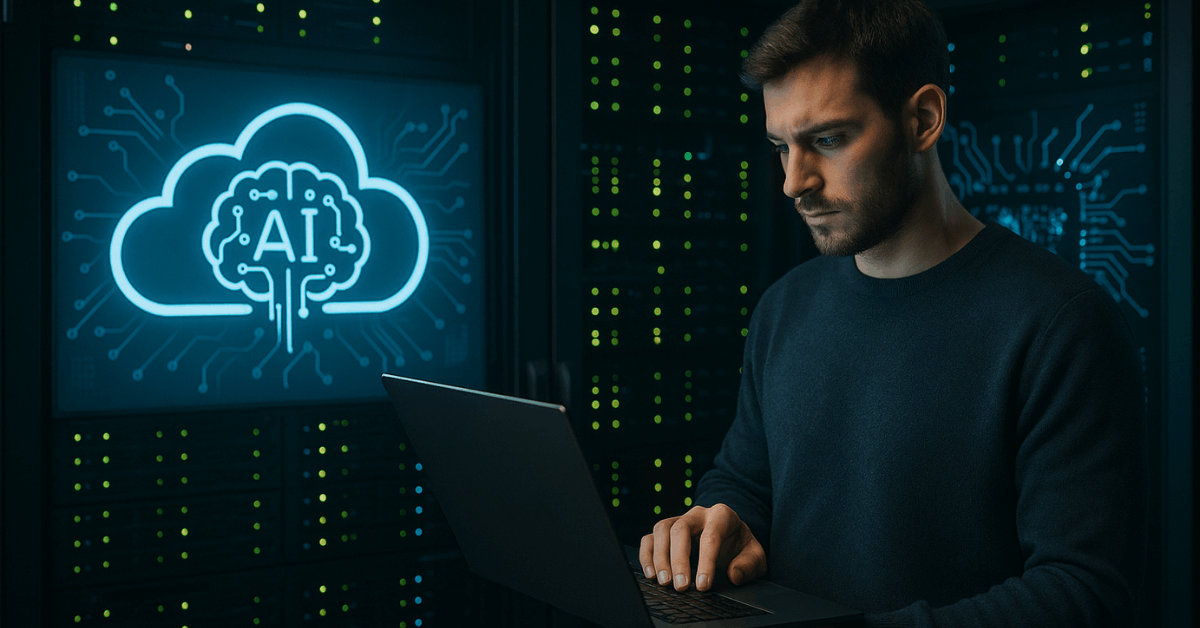Cloud storage continues to grow in relevance as data needs expand globally. In 2025, the demand for secure and accessible storage is higher than ever.
Users now expect speed, automation, and seamless integration across devices. This article breaks down the most important technologies shaping cloud storage this year.
The Evolution of Cloud Storage
Cloud storage has changed rapidly over the past five years. In 2025, you’re witnessing major shifts in how data is stored and accessed.
These changes reflect the need for better performance, reliability, and smart automation. More users rely on hybrid and AI-enhanced storage solutions today.
What Has Changed Since 2020?
Storage needs have grown due to remote work, 4K content, and real-time services. Traditional storage is no longer enough for speed and scaling.
Cloud providers have shifted to dynamic, scalable infrastructure. AI now plays a role in optimizing file access and storage allocation.
Key Drivers of Cloud Innovation
Security threats pushed providers to improve encryption and user controls. The demand for faster access resulted in global server expansion.
Small businesses now want affordable, easy-to-scale storage options. Efficiency and cost reduction remain top goals in every platform update.
Multi-Cloud and Hybrid Cloud Strategies
Businesses today don’t rely on one provider. Multi-cloud and hybrid setups offer flexibility, security, and failover options.
You can pick the best features from each platform. This strategy protects your data and ensures smooth operations.
What Is Multi-Cloud and Why Use It?
Multi-cloud uses two or more providers like AWS, Azure, or Google Cloud. It avoids overdependence on one ecosystem.
You get stronger uptime, more pricing options, and service diversity. It’s ideal for businesses with regional and global operations.
Hybrid Cloud Models in 2025
Hybrid cloud mixes private servers with public cloud. This model helps manage sensitive data internally while scaling externally.
Tools like VMware Cloud and IBM Hybrid Cloud lead this shift. Hybrid use is common in healthcare, finance, and government sectors.
Edge Computing and Decentralized Storage
Edge computing is critical for low-latency apps and real-time processing. It brings cloud functions closer to the end user.
Meanwhile, decentralized storage offers better privacy and resilience. These technologies reduce reliance on central servers.
How Edge Computing Changes Storage?
Edge nodes process data at the source, not far-off data centers. This cuts delays in gaming, AI, and streaming.
You get faster response and reduced bandwidth use. It also adds redundancy in case of outages.
Decentralized Storage Networks
Blockchain storage tools like Filecoin and IPFS are rising. These networks split and store data across many nodes.
They offer better resistance against failures and censorship. Their use is expanding in tech-savvy and privacy-focused markets.
AI-Powered Cloud Storage Systems
AI makes cloud storage smarter and more efficient. It helps you organize, search, and retrieve data faster.

These tools reduce the need for manual file management. Predictive systems are now common in business environments.
Smart File Management and Indexing
AI tools tag, sort, and prioritize files automatically. Search results are faster and more relevant.
You spend less time looking for documents. Smart indexing improves performance even in large data lakes.
Predictive Storage Optimization
AI systems predict usage patterns and adjust storage resources. Files you use often are stored closer or loaded faster.
This improves speed and reduces energy consumption. You save money and get a better user experience.
Cloud Storage Security in 2025
Security remains a top concern in cloud services. In 2025, the focus is on zero-trust models and full encryption.
Cloud platforms offer more robust identity and access tools. These ensure your data is private and protected.
Zero Trust Architecture
Zero trust means no device or user is trusted by default. Every access request is verified in real time.
This protects data from internal and external threats. It’s becoming the new standard in enterprise cloud setups.
End-to-End Encryption and Secure Access
Data is encrypted before upload and decrypted only at the destination. Multi-factor authentication is standard across platforms.
Biometric access and role-based permissions add extra layers. These features are key for sensitive personal and business data.
Affordable and Scalable Consumer Options
Consumers also benefit from better storage choices in 2025. Plans are more flexible, faster, and easier to use.
Providers aim to simplify backup, restore, and sharing. Personal data is now managed with enterprise-level tools.
Cloud Storage for Personal Use
Google One, Dropbox, and iCloud offer automatic backups and large storage limits. You can sync photos, files, and videos instantly.
AI helps detect duplicates and manage space. These features run smoothly across phones, tablets, and PCs.
Family and Shared Cloud Plans
Family plans let multiple users store data with one account. Each member can have private space and shared folders.
Controls allow parents to manage children’s access. It’s a useful setup for home and group environments.
Business-Oriented Cloud Storage Tools
Businesses need tools that grow with their operations. 2025 platforms support teams, automation, and compliance.
They also offer better monitoring and cost control. The result is a smoother, safer data workflow.
Solutions for Small to Medium Businesses
Tools like Backblaze B2 and pCloud Business provide budget options. They come with customizable storage limits and API access.
Businesses get detailed logs and user management features. These tools balance price and performance well.
Enterprise-Level Storage Innovations
Large firms use AI-integrated data lakes with built-in compliance checks. High-availability architecture ensures 99.999% uptime.
Platforms integrate with CRM, ERP, and analytics tools. You also get real-time reporting and audit trails.
Sustainable Cloud Infrastructure
Green technology is a strong trend in cloud storage. Providers aim to cut emissions and boost efficiency.
Data centers now use solar, wind, and water sources. Users benefit from better performance with less environmental cost.
Green Data Centers
Google, AWS, and Microsoft now power most centers with renewables. They monitor usage and heat to minimize waste.
Cooling systems are optimized for low power draw. This helps meet global sustainability goals.
Energy-Efficient Storage Devices
NVMe drives and SSDs have replaced many hard disks. These devices use less power and give faster access.
Providers now optimize data writing cycles to extend lifespan. Energy use per terabyte has dropped across the board.
Collaboration and Productivity Features
Cloud storage is part of modern work tools. Integrated platforms improve file sharing and teamwork.
In 2025, features support both in-office and remote work. Teams benefit from synced updates and secure links.
Real-Time Document Collaboration
Google Docs and Microsoft 365 let teams edit files at once. Changes sync instantly across devices.
You can track revisions and comments easily. These tools boost efficiency in group projects.
Integration With Workflow Tools
Cloud storage now links with Trello, Notion, and Slack. Files can be attached, previewed, and discussed in one place.
This reduces switching between apps. Projects move faster with central file access.
Offline Access and Syncing Enhancements
Storage must work even without internet. Platforms now support advanced syncing and offline edits.
This ensures productivity isn’t lost during outages. Files update automatically when you reconnect.
Improved Sync Reliability
Sync engines detect changes in real time and reduce conflicts. You can select folders for offline use. Speed and accuracy are much better than older versions. Sync errors are now rare.
Offline Access in 2025
Users can open and edit files offline with full features. Once back online, updates sync in the background.
Offline access is common in mobile and desktop apps. It’s now standard for all major platforms.
Future of Cloud Storage: Quantum and Beyond
Tomorrow’s storage tech is already in development. Quantum computing and biological media are in research labs.
These breakthroughs could change storage forever. While still early, signs of real progress are visible.
Quantum-Safe Cloud Storage
Encryption is being updated to withstand quantum decryption. Providers are testing quantum-resistant algorithms.
This protects against future cybersecurity risks. You may soon see quantum-safe plans offered.
Speculative Developments (2030+)
Some labs work on DNA-based storage and holographic media. These can store massive data in tiny spaces.
Long-term backups may move to these platforms. They are still experimental but promising.
Embrace the Future of Storage
Cloud storage in 2025 is more powerful, secure, and user-friendly. Businesses and individuals benefit from AI, hybrid models, and improved syncing.
Security and sustainability are now central to every offering. Choose the best cloud solution for your needs and take advantage of these innovations.



